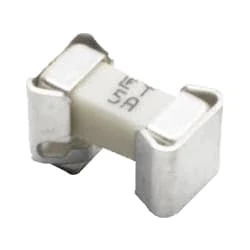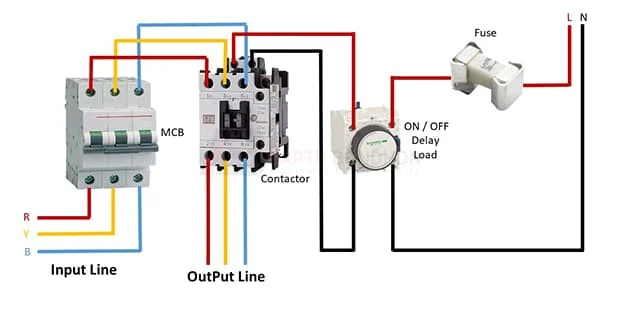3-phase contactor circuit diagram:
This diagram shows how to connect a 3-phase contactor circuit diagram. In this circuit diagram, we just try to describe simply how to connect a 3-phase contactor circuit diagram to house loads. This diagram is for 3-phase contactor circuit diagram Industrial wiring. So you can wire your Industrial or office like this diagram very easily. If you want to learn how to connect this circuit clearly you can follow our youtube video link below.
Diagram of 3-phase contactor circuit diagram:
Components Need for this Project:
You can get the components from any of the sites below:
- TP MCB [See Buy Click Amazon]
- Magnetic Contactor [See Buy Click Amazon]
- ON/OF Delay Load [See Buy Click Amazon]
- Fuse [See Buy Click Amazon]
*Please note: These are affiliate links. I may make a commission if you buy the components through these links. I would appreciate your support in this way!
Read Also:
Components used to make the 3-phase contactor circuit diagram:
01. TP MCB
 |
| Fig 2: TP MCB |
Three wires can be controlled by a triple pole MCB. Triple pole MCB circuit breakers are generally used in three-phase lines. A triple-pole MCB circuit breaker has three wires at its input and three wires at its output. But one can use this circuit breaker in a single-phase line. TP MCB widely used in industries. The reason is that it has three poles. And this TP circuit breaker is used to provide three-phase and three-phase connections. A neutral is not normally used in three-phase lines. But a 4-pole MCB circuit breaker is used if needed.
02. Magnetic Contactor
 |
| Fig 3: Magnetic Contactor |
A magnetic contactor is an electrical device used for load control, automation, and protection. It is much like a magnetic reel. However, relays are generally used for low power and voltage, on the other hand, when we think of high power, these heavy-duty contractors only come to mind. It basically works by switching the load on and off. It has 3 terminals whose inputs are denoted as L1, L2, L3, and outputs as T1, T2, and T3. The circuit of the load is made in automation mode or protection using auxiliary contacts. It has two types of terminals. 1) Normally Open (NO). 2) Normally Closed (NC)
03. ON/OF Delay Load
 |
| Fig 4: ON/OF Delay Load |
ON/OF Delay Load is a specialized type of clock used for measuring specific time intervals.An electromechanical cam ON/OF Delay Load uses a small synchronous AC motor turning a cam against a comb of switch contacts. This type of ON/OF Delay Load often has a friction clutch between the gear train and the cam, the cam can be turned to reset the time.A simple example of the first type is an hourglass. Working method ON/OF Delay Load have two main groups hardware and software ON/OF Delay Load.Most timers give an indication that the time interval that had been set has expired.
04. Fuse
 |
| Fig 5: Fuse |
Fuses have Been Used as Essential Safety Devices From the Early Days of Electrical Engineering. Today There are Thousands of Different fuse Designs Which have Current Voltage ratings, Breaking Capacity, and Response Times, Depending on the Application. Electricity Component Current Operating Characteristics of Fuses are Chosen to Provide Adequate Protection Without Needless Interruption. House Wiring regulations usually define a Maximum fuse Current rating for Particular Circuits. When a Damaged live Wire Makes contact with a Metal Case that is connected to the Ground. A Short Circuit will Form and The Fuse will Melt.
Thank You for visiting the website. Keep visiting for more Updates


Post a Comment
Do leave your comments